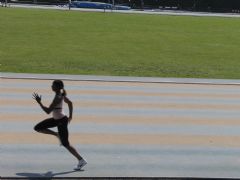Whilst there are obviously several explanations for this eventuality, based around how her physiology has adapted over time, the statement about the warm-up intensity jogged my mind back to an abstract I read last week. The abstract was summarising a study conducted by de la Cruz, Brennenraedts & Bury, which was published in the British Journal of Sports Medicine earlier this year & looked at the intensity of warm-up in relation to the time to exhaustion at maximum aerobic speed.
The study concluded that an intense warm-up, defined as 15 minutes of warm up at 55% VO2 max then 5 minutes of (speed at lactate threshold 1 speed at OBLA*)/2 resulted in a higher time to exhaustion at maximal aerobic speed in comparison to a lower intensity warm-up (20 minutes of warm-up at 55% VO2 max) or following no warm-up at all. The authors hypothesised that the results were the result of a faster cardiovascular adaptation to the demands of the work exposure following the warm-up.
So, is this the most likely reason? Well, it must be noted that I am talking about an elite female sprinter (early twenties) & the study population consisted of 11 male, middle distance athletes with an average age of 30 - not exactly data that can be appropriately extrapolated to the athlete I was discussing this with, given the expected differences in physiology. However, the theory behind the study does suggest a plausible explanation that would be worth further investigation in a different population.
To read the abstract for yourself, click on the link below (& if any of you can find the original, full PDF of the article, I would be really grateful if you could share it with us!!!!)
*OBLA - onset of blood lactate accumulation

